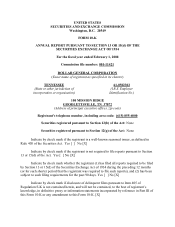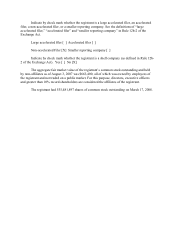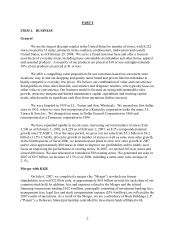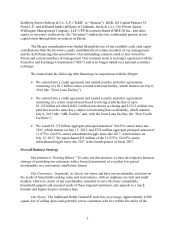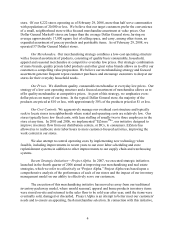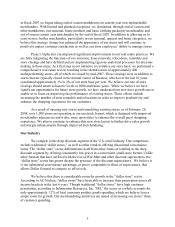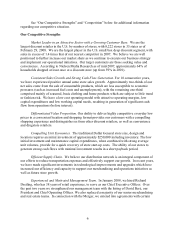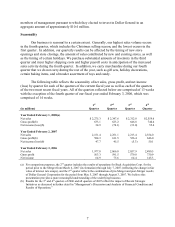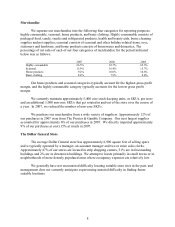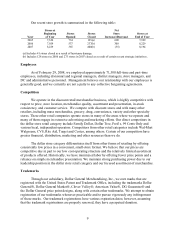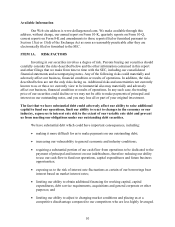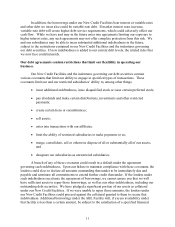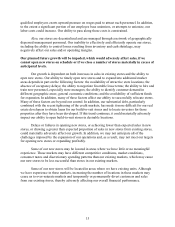Dollar General 2007 Annual Report Download - page 7
Download and view the complete annual report
Please find page 7 of the 2007 Dollar General annual report below. You can navigate through the pages in the report by either clicking on the pages listed below, or by using the keyword search tool below to find specific information within the annual report.5
in fiscal 2007 we began taking end-of-season markdowns on current-year non-replenishable
merchandise. With limited and planned exceptions, we eliminated, through end-of-season and
other markdowns, our seasonal, home products and basic clothing packaway merchandise and
out of season current year merchandise by the end of fiscal 2007. In addition to allowing us to
carry newer, fresher merchandise, particularly in our seasonal, apparel and home categories, we
believe this strategy change has enhanced the appearance of our stores and will continue to
positively impact customer satisfaction as well as our store employees’ ability to manage stores.
Project Alpha also encompassed significant improvements to our real estate practices. We
are fully integrating the functions of site selection, lease renewals, relocations, remodels and
store closings and have defined and are implementing rigorous analytical processes for decision-
making in those areas. As a first step in our initiative to revitalize our store base, we performed a
comprehensive real estate review resulting in the identification of approximately 400
underperforming stores, all of which we closed by mid-2007. These closings were in addition to
stores that are typically closed in the normal course of business, which over the last 10 years
constituted approximately 1% to 2% of our store base per year. We believe our rate of store
closings should return to historic levels in 2008 and future years. While we believe we have
significant opportunities for future store growth, we have moderated our new store growth rate to
enable us to focus on improving the performance of existing stores. Those efforts include
increasing the number of store remodels and relocations in order to improve productivity and
enhance the shopping experience for our customers.
As a result of opening new stores and remodeling existing stores, as of February 29,
2008, over 1,000 stores are operating in our racetrack format, which is designed with improved
merchandise adjacencies and wider, more open aisles to enhance the overall guest shopping
experience. We plan to continue to enhance this new store layout to further drive sales growth
and margin enhancements through improved merchandising.
Our Industry
We compete in the deep discount segment of the U.S. retail industry. Our competitors
include traditional “dollar stores,” as well as other retailers offering discounted convenience
items. The “dollar store” sector differentiates itself from other forms of retailing in the deep
discount segment by offering consistently low prices in a convenient, small-store format. Unlike
other formats that have suffered with the rise of Wal-Mart and other discount supercenters, the
“dollar store” sector has grown despite the presence of the discount supercenters. We believe it
is our substantial convenience advantage, at prices comparable to those of supercenters, that
allows Dollar General to compete so effectively.
We believe that there is considerable room for growth in the “dollar store” sector.
According to AC Nielsen, “dollar stores” have been able to increase their penetration across all
income brackets in the last 6 years. Though traditional “dollar stores” have high customer
penetration, according to Information Resources, Inc. “IRI,” the sector as a whole accounts for
only approximately 1.2% of total consumer product goods spending, which we believe leaves
ample room for growth. Our merchandising initiatives are aimed at increasing our stores’ share
of customer spending.

